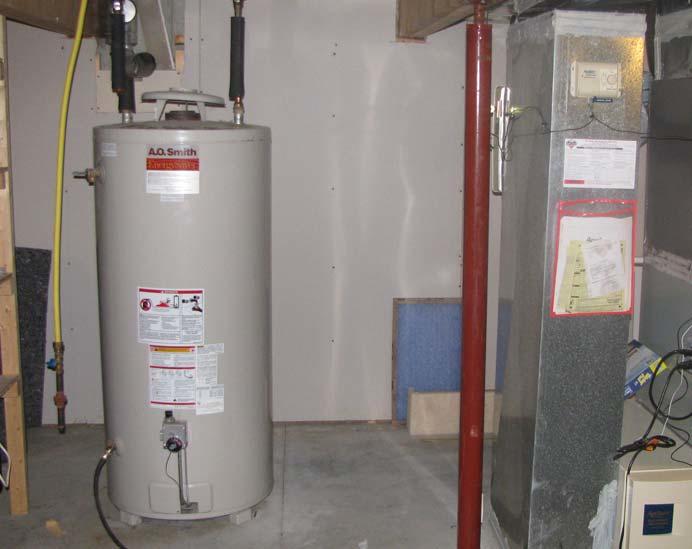The content below relating to Water Heater Maintenance Tips You Can't Afford to Forget is without a doubt interesting. You should investigate it.

Hot water is necessary for daily convenience, whether it's for a refreshing shower or cleaning dishes. To guarantee your warm water system runs efficiently and lasts longer, normal maintenance is crucial. This article supplies practical pointers and understandings on just how to keep your home's warm water system to avoid disturbances and costly repair work.
Intro
Maintaining your home's hot water system could appear challenging, but with a few basic actions, you can ensure it runs smoothly for several years to find. This guide covers whatever from recognizing your hot water system to DIY maintenance ideas and knowing when to call in expert aid.
Importance of Preserving Your Warm Water System
Regular maintenance not only extends the life expectancy of your warm water system yet also ensures it operates successfully. Neglecting upkeep can lead to reduced performance, higher energy expenses, and also premature failure of the system.
Indications Your Warm Water System Demands Upkeep
Knowing when your hot water system needs interest can protect against significant issues. Look out for signs such as inconsistent water temperature, odd sounds from the heating unit, or rusty water.
Understanding Your Warm Water System
Before diving right into upkeep jobs, it's practical to recognize the standard parts of your warm water system. Commonly, this includes the water heater itself, pipes, anode rods, and temperature controls.
Monthly Maintenance Tasks
Normal month-to-month checks can help catch minor issues prior to they rise.
Purging the Water Heater
Purging your hot water heater eliminates sediment buildup, improving performance and lengthening its life.
Monitoring and Changing Anode Rods
Anode poles stop rust inside the storage tank. Examining and replacing them when worn out is critical.
Inspecting and Adjusting Temperature Level Setups
Changing the temperature setups makes sure ideal efficiency and security.
DIY Tips for Upkeep
You can carry out several upkeep tasks on your own to maintain your hot water system in leading problem.
Checking for Leakages
On a regular basis examine pipelines and connections for leaks, as these can cause water damage and greater expenses.
Testing Stress Alleviation Valves
Checking the stress safety valve ensures it operates properly and prevents too much pressure buildup.
Shielding Pipes
Shielding hot water pipelines minimizes warm loss and can conserve power.
When to Call a Professional
While do it yourself maintenance is valuable, some problems call for specialist know-how.
Complex Problems Requiring Expert Aid
Examples consist of significant leaks, electrical troubles, or if your water heater is constantly underperforming.
Routine Expert Upkeep Perks
Expert upkeep can consist of extensive inspections, tune-ups, and making sure conformity with safety and security standards.
Final thought
Normal maintenance of your home's hot water system is crucial for efficiency, longevity, and expense financial savings. By following these suggestions and recognizing when to seek professional assistance, you can make certain a trustworthy supply of warm water without unexpected interruptions.
Water Heater Maintenance Tips
Test the TPR Valve
Shut off the power and the cold-water supply valve. Place a bucket under the pipe connected to the temperature-pressure-release (TPR) valve on the top or side of the tank. (This valve opens if the tank pressure gets too high.) Lift the valve’s tab to let some water out, then let go. If water keeps flowing, drain the tank partway, unscrew the old valve with a pipe wrench, and install a new one. Check the Anode Rod
Put a hose to the tank’s drain cock and let out a few gallons of water. Now fit a 1 1/16-inch socket onto the rod’s hex head on top of the heater (or under its top plate) and unscrew the rod. If it’s less than ½ inch thick or coated with calcium, buy a new one, wrap its threads with Teflon tape, put it back in the tank, and tighten securely. Use this segmented rod if headroom above the tank is limited. Drain the Tank and Wash Out Sediment
Drain the remaining water in the tank into the bucket, then stir up the sediment on the tank’s bottom by briefly opening the cold-water supply valve. Drain and repeat until clean water comes out of the hose. Close the drain cock, refill the tank, and turn its power back on. Adjust the Temperature
Find the temperature dial on the side of the tank and unscrew its cover. Adjust the dial to 120 degrees using a flathead screwdriver. For every 10 degrees the temperature is lowered, you can expect to save up to 5 percent in energy costs. Turn the water heater off or the thermostat down to its lowest setting if you plan to be away from home for more than three days. Insulate the Pipes
Buy some self-sticking 3/8-inch-thick foam pipe insulation that matches the pipes’ diameter. Slide the foam over the hot-and cold-water pipes as far as you can reach. Insulating the cold-water pipe prevents condensation in summer. Peel the tape and squeeze the insulation closed. If the pipe is 6 inches or less from the flue, cover it with 1-inch-thick unfaced fiberglass pipe wrap. https://www.thisoldhouse.com/plumbing/21016402/how-to-maintain-a-water-heater

As a keen person who reads on Tips on Maintaining a Water Heater, I thought sharing that piece of writing was a good idea. Sharing is caring. Who knows, you will be doing someone a favor. Bless you for your time. Don't forget to pay a visit to our site back soon.
Set An Appointment